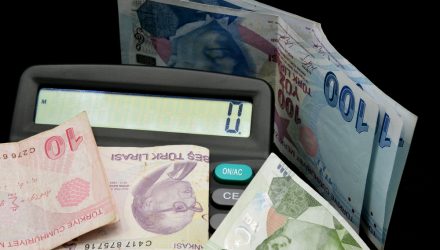By Natalia Gurushina, Chief Economist, Emerging Markets Fixed Income Strategy, VanEck
A surprising increase in Turkish inflation will test the central bank’s recent policy U-turn. Brazil’s Q3 rebound was weaker than expected, raising more questions about the country’s ability to grow out of debt.
A sizable upside surprise in Turkey’s inflation (14.03% year-on-year in November) means a sizable drop in Turkey’s real rates (see chart below). This reduces the positive impact of the recent benchmark rate hike, which, in turn, invites questions about the need for additional policy tightening in the coming weeks. Judging by the currency’s reaction this morning (up by 107bps vs. U.S. dollar as of 10am ET, according to Bloomberg LP), the market thinks that the central bank might hike rates again on December 24.
The Brazilian economy rebounded strongly in Q3 2020 (7.7% quarter-on-quarter). The rebound, however, was smaller than expected, and it comes on the heels of a downside surprise in October’s industrial production (which points to downside growth risks in Q4). The market is paying very close attention to Brazil’s growth trajectory, because the country needs to grow out of debt, which surged to 90.75% (gross public sector debt) during the pandemic. The GDP growth rates will also affect the government’s ability to meet its ambitious fiscal adjustment targets for 2021.
China’s Caixin services PMI (Purchasing Managers Index) was just as impressive as its official counterpart. It accelerated more than expected in November (from 56.8 to 57.8), signaling that the recovery is getting more balanced and that the “drip” stimulus approach was the right policy choice. Today’s release bodes well not just for China’s growth outlook, but also for China’s growth differential with the rest of the world―an important consideration for various asset classes.
Chart at a Glance: Turkey Real Policy Rate Dragged Down by Higher Inflation

Source: Bloomberg LP
Originally published by VanEck, 12/3/20
IMPORTANT DEFINITIONS & DISCLOSURES
PMI – Purchasing Managers’ Index: economic indicators derived from monthly surveys of private sector companies; ISM – Institute for Supply Management PMI: ISM releases an index based on more than 400 purchasing and supply managers surveys; both in the manufacturing and non-manufacturing industries; CPI – Consumer Price Index: an index of the variation in prices paid by typical consumers for retail goods and other items; PPI – Producer Price Index: a family of indexes that measures the average change in selling prices received by domestic producers of goods and services over time; PCE inflation – Personal Consumption Expenditures Price Index: one measure of U.S. inflation, tracking the change in prices of goods and services purchased by consumers throughout the economy; MSCI – Morgan Stanley Capital International: an American provider of equity, fixed income, hedge fund stock market indexes, and equity portfolio analysis tools; VIX – CBOE Volatility Index: an index created by the Chicago Board Options Exchange (CBOE), which shows the market’s expectation of 30-day volatility. It is constructed using the implied volatilities on S&P 500 index options.; GBI-EM – JP Morgan’s Government Bond Index – Emerging Markets: comprehensive emerging market debt benchmarks that track local currency bonds issued by Emerging market governments.; EMBI – JP Morgan’s Emerging Market Bond Index: JP Morgan’s index of dollar-denominated sovereign bonds issued by a selection of emerging market countries; EMBIG – JP Morgan’s Emerging Market Bond Index Global: tracks total returns for traded external debt instruments in emerging markets.
The information presented does not involve the rendering of personalized investment, financial, legal, or tax advice. This is not an offer to buy or sell, or a solicitation of any offer to buy or sell any of the securities mentioned herein. Certain statements contained herein may constitute projections, forecasts and other forward looking statements, which do not reflect actual results. Certain information may be provided by third-party sources and, although believed to be reliable, it has not been independently verified and its accuracy or completeness cannot be guaranteed. Any opinions, projections, forecasts, and forward-looking statements presented herein are valid as the date of this communication and are subject to change.
Investing in international markets carries risks such as currency fluctuation, regulatory risks, economic and political instability. Emerging markets involve heightened risks related to the same factors as well as increased volatility, lower trading volume, and less liquidity. Emerging markets can have greater custodial and operational risks, and less developed legal and accounting systems than developed markets.
All investing is subject to risk, including the possible loss of the money you invest. As with any investment strategy, there is no guarantee that investment objectives will be met and investors may lose money. Diversification does not ensure a profit or protect against a loss in a declining market. Past performance is no guarantee of future performance.







